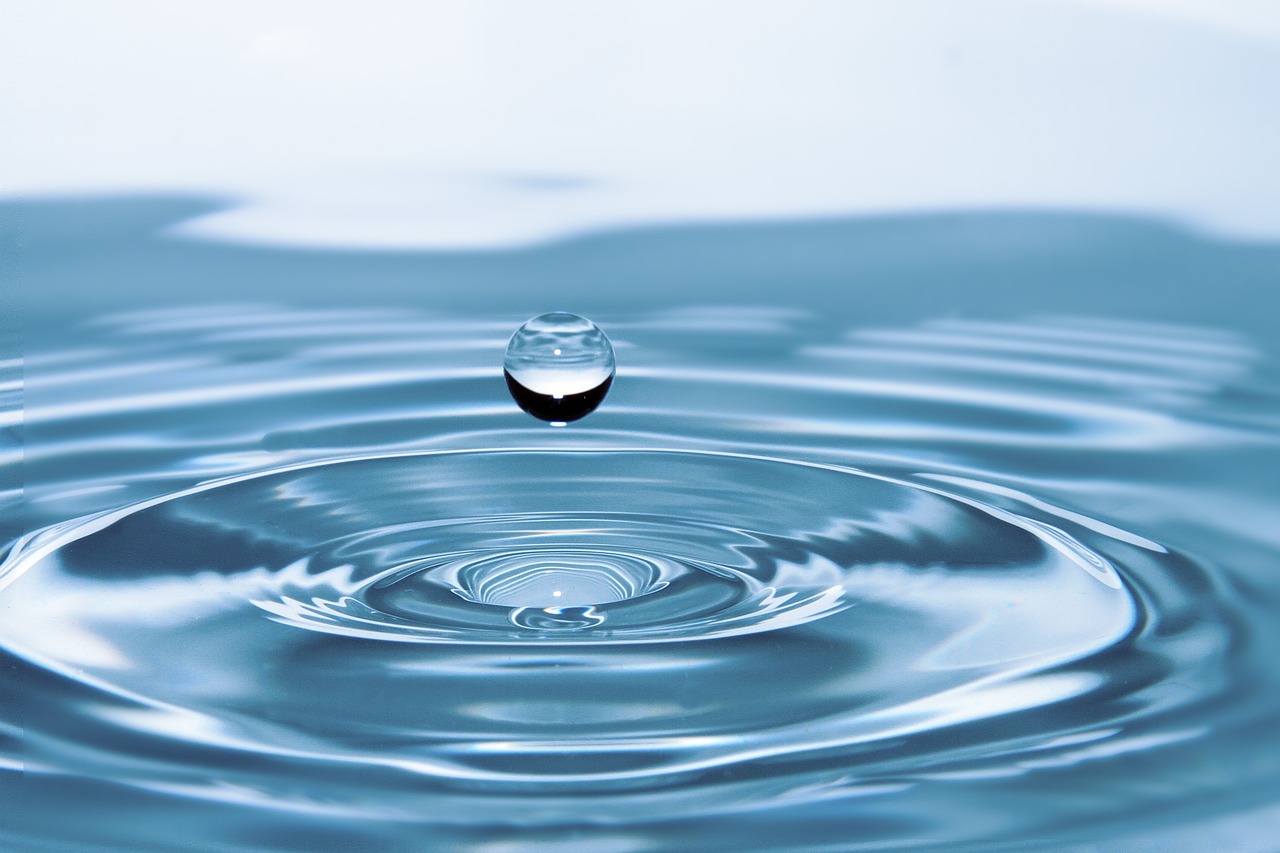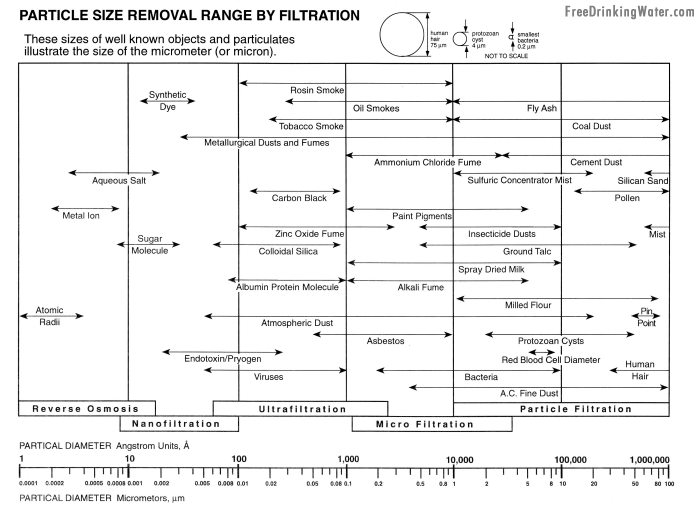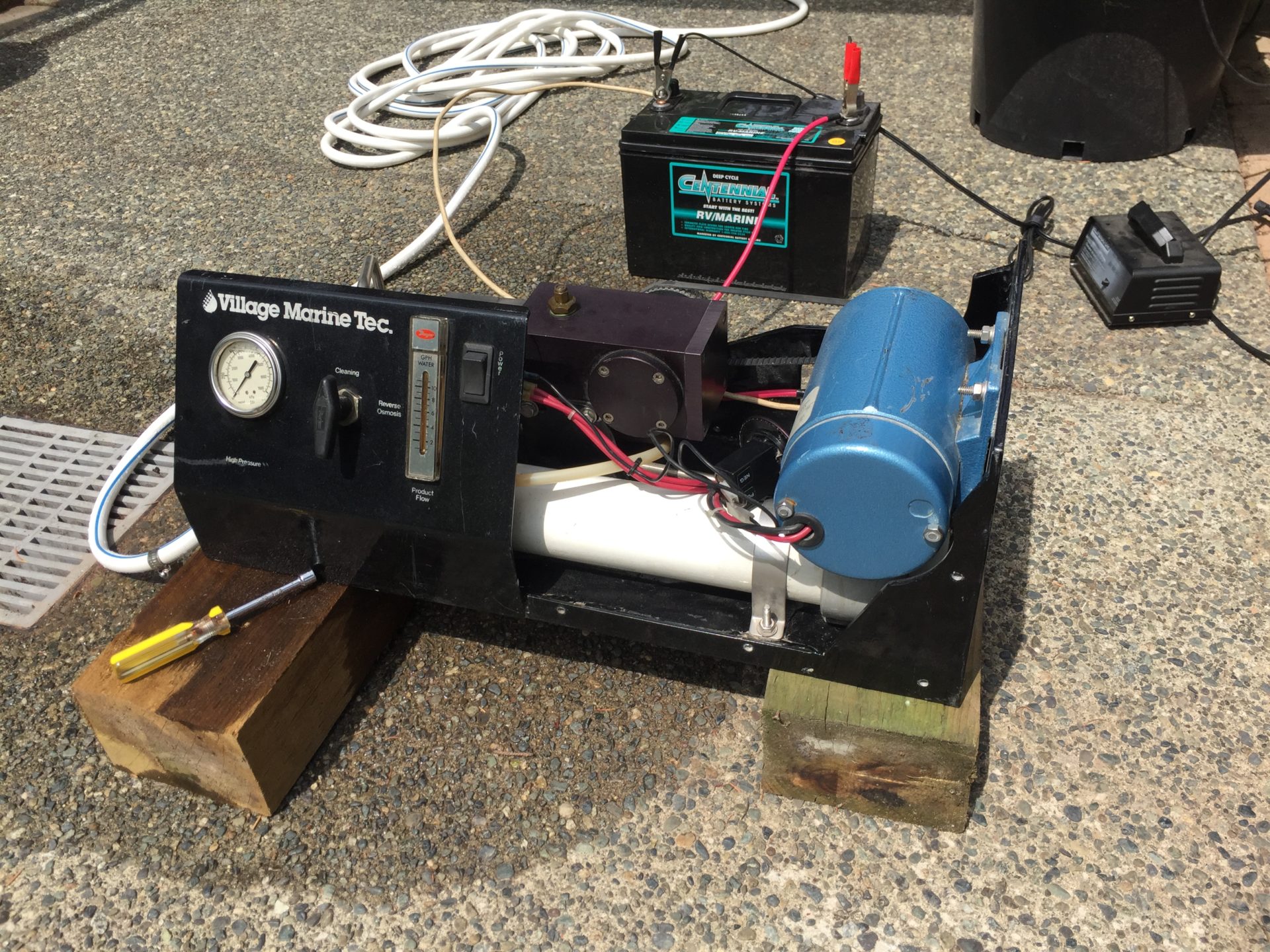10 Things to Know About Making Water

Water, water, everywhere – and plenty to drink.
Reliable diesel engines for propulsion and stabilizers for comfort are often cited as the key elements that make cruising around the globe in a Nordhavn possible. There is a lesser-mentioned element, however, that I think belongs in this category as well: the ability to make freshwater.
Sure, an owner could stock up on enough bottled water to get across the Pacific without dying of thirst, but the limited freshwater tank capacity would make enjoying a long, hot shower a rare luxury. Plentiful tap water, laundry washing, reliable freshwater toilets, freshwater washdowns and other conveniences would become impractical at best without the ability to make freshwater at sea.
Besides, a big part of owning a Nordhavn is being able transit the globe in five-star comfort – and having to ration water would put a serious damper on the experience.
These were some of the thoughts circling my mind while attending a training session put on by Racor – Village Marine Tec., which is a global company that manufactures the watermakers found on most Nordhavns. While the bulk of the session focused on familiarization with the machinery and operating and maintenance procedures, there were more than a few pearls of general wisdom that I thought owners would find useful and interesting.
1) What is freshwater, drinking water, potable water, TDS, ppm, etc.?
Potable water simply refers to water that is safe to drink, and the World Health Organization says that water with a total dissolved solids (TDS)concentration of 1000 parts per million (ppm) or lower is acceptable, and that anything below 600 ppm is “good” drinking water.
TDS are the salts and small amounts of organic matter dissolved in seawater, which can range from about 32,000 ppm at the lower end to 38,000 ppm at the higher end depending where you’re at on the globe – 35,000 ppm is considered average (an easy way to think of ppm is as a percentage, so average seawater is about 3.5% salt and other dissolved solids, and “good” drinking water is only 0.06% salt).

2) Will I die if I drink seawater?
For sure if you drink enough 35,000 ppm seawater. While the human body requires salt to function and survive, it just can’t metabolize massive amounts of salt, which can lead to dehydration, seizures, unconsciousness and brain damage – and at the extreme, kidney failure and death. Obviously an accidental swallow or two while splashing around is nothing to worry about, and there’s no real danger from drinking water with 1000 ppm, even though the taste might not be that great (water over 500-600 ppm can have an alkaline taste, and at 1500 ppm can taste like weak alka-seltzer – the really salty taste we equate with seawater isn’t noticeable until about 4000 ppm). In fact, in 1958 the World Health Organization had set the limit for potable water at 1500 ppm, but it changed to the lesser figure of 1000 ppm in 1984 based on taste considerations.
3) What is Reverse Osmosis?
Watermakers utilize the process of Reverse Osmosis (RO) to produce freshwater from seawater, and you will commonly hear them referred to as “RO units.” The natural osmosis process is one where if you place freshwater on one side of a semi-permeable membrane and seawater on the other, the freshwater will move through the membrane to the seawater in an effort to achieve a balanced solution on each side.
However, if you place a large amount of pressure on the seawater side, and use a membrane designed to only allow water to pass through, the reverse happens and freshwater is pushed out of the seawater, leaving behind a highly-concentrated brine solution much greater than 35,000 ppm.

4) Is it really OK to drink this stuff, or should I just use it for cleaning, showers and cooking and buy bottled water to drink?
For the Racor – Village Marine units, the threshold is 500 ppm, anything higher doesn’t go to the freshwater tank – and much of the time the salt content will be much lower than this. For comparison, the 2010 City of Los Angeles Annual Water Quality Report pointed to a range between 200 ppm and 600 ppm for tap water depending on the location. And, again, the World Health Organization considers anything below 1000 ppm safe and anything below 600 ppm good in terms of taste.
It’s also worth mentioning that reverse osmosis removes more than just salt. Between the sea strainer, pre-filters and RO membranes, things like bacteria, viruses and other undesirables are removed (see chart from FreeDrinkingWater.com below), leaving the product water cleaner than just about anything you’re going to get from a dock hose. In fact, many boaters like watermakers because they can use the water for washdown, and the water is so pure it doesn’t leave any waterspots.
5) So I don’t need a UV purifier if I have watermaker?
Even though the water leaving an RO unit should be free of any biological contamination, the same can’t be said for the water once it comes in contact with a water tank that is frequently filled with tap water from the dock – so a UV purifier is still a good idea. UV purifiers expose freshwater leaving the tank to UV-C ultraviolet light (sometimes called germicidal UV) that effectively sterilizes the water by killing viruses, bacteria and any other biological contamination.
The UV unit should be installed downstream of the freshwater pump, not at the outlet of the watermaker, which is an error sometimes found aboard. Also, it’s important to match the flow rate capacity of the UV purifier with the system flow rate – too much flow and the exposure time to the UV light might not be long enough to completely sterilize the water.
6) What factors will affect the performance of my watermaker?
The biggest are water temperature, pressure and salinity (high salinity is seawater with more ppm, low salinity is less) – with temperature being the most significant. In higher-temperature water the membrane elements will swell and allow more product water and more salt though, so you’ll get more freshwater, but it’ll have a little more salt in it. In cold water, the membranes restrict, yielding less flow with less salt content – better water, but less of it. If the salinity increases, like going to the Mediterranean where seawater can be as high as 38,000 ppm, you’ll get more salt and less product water.
If you increase the pressure on the seawater, you’ll get more product water with less salt. As you can see, where you take your Nordhavn, and when you take it there, can have a noticeable effect on the quality and quantity of the water your RO unit is making.

7) So how can I tell if my watermaker is working right if the product water is always changing depending on where I’m at?
For the Village Marine units, a temperature-correction factor chart is provided in the owner’s manuals to help operators determine whether their watermakers are working properly depending on seawater temperature. An owner with an 800-gallon-per-day (33 gallons per hour) unit visiting Anchorage, Alaska in April might be going nuts because he’s only making 10 gph – that’s less than half the rated production rate.
However, seawater at 34°F gets a correction factor of 3.47 (cold water really shrinks the membrane pores and slows down production), which brings the corrected figure up to 34.7 gph (10x3.47). As long as this number is within 20% of either end of the rated 33 gph (between about 40 gph and 26 gph), then there’s no cause for concern.
8) How important is freshwater flushing?
Allowing stagnant seawater to sit inside a watermaker for even a few days will invite bacterial and biological growth, which can foul and clog membranes and, depending on the severity, seriously hinder performance. Freshwater flushing of the unit is the prime way to combat this, and many watermakers even include automatic timed flushing sequences. Typically a carbon filter is provided to remove chlorine from the freshwater before it is put through the RO filters, pumps and membranes.
Just about all tap water from a dock is going to contain chlorine, and chlorine is very bad for the RO membranes (and exposing membranes to chlorinated water can void an RO unit warranty). So it’s important for owners to ensure their carbon freshwater flushing filters are changed as indicated.
9) Is this the same as membrane cleaning?
NO! Freshwater flushing simply flushes all the seawater out of the unit. Membrane cleaning, probably better to call it chemical cleaning, is a process where chemicals are introduced into the system and allowed to circulate in a closed loop to remove oil, grease, biological matter, grime and scale from the membranes and other parts of the system. The Village Marine manual says chemical cleaning should be performed if the RO unit production drops below 80% of rated production (corrected for temperature, of course).
However, the actual guidance from the guys at Village Marine is to give them a phone call if you think it’s time for a chemical cleaning because more often than not there’s something else going on, and many times the solution is much simpler than going through the chemical cleaning process.
One important side note here: If you do a chemical cleaning it is very important to position the Cleaning Valve with the gray handle on the face of the Village Marine units from Cleaning Flow back to Normal Flow. If the valve is accidentally left in the cleaning position and the owner tries to operate the unit to make water there is a chance the low-pressure side of the system will be hit with 800 pounds of pressure and blow off some hoses.
10) Do I need an engineering degree to run and fix these machines?
Generally speaking, watermakers are fairly simple and straightforward devices to install, operate and maintain. However, because there are so many factors that can affect their performance, it can be confusing to know whether the unit is working properly given the circumstances or whether there is a legitimate mechanical or electrical issue that needs to be addressed. The owner’s manuals that come with these units do provide a bounty of information and troubleshooting tips, so familiarization here is well worth the effort.
And there are plenty rules of thumb, like if the water doesn’t taste like alkali or salt but your ppm meter is reading high, you might have a faulty ppm sensor. Or, a freshwater flush is the best way to push air out of the system after a filter change. Or, like a diesel engine, the more often you use an RO maker the longer it will last.
A plentiful source of freshwater is key to the Nordhavn experience, which makes having a properly functioning watermaker an absolute must. Even though there is a learning curve and some complexity involved, these machines are actually well within the capability of owner/operators in terms of operation and maintenance – and help is always available through manuals and ever-ready tech support.
In fact, the Racor – Village Marine folks have mentioned the possibility of holding owners/captains courses at their location in Southern California for those who want to learn more about their watrermakers – you can follow up by contacting Marine Territory Manager Steve Theus at (619) 226-4195 for more information.